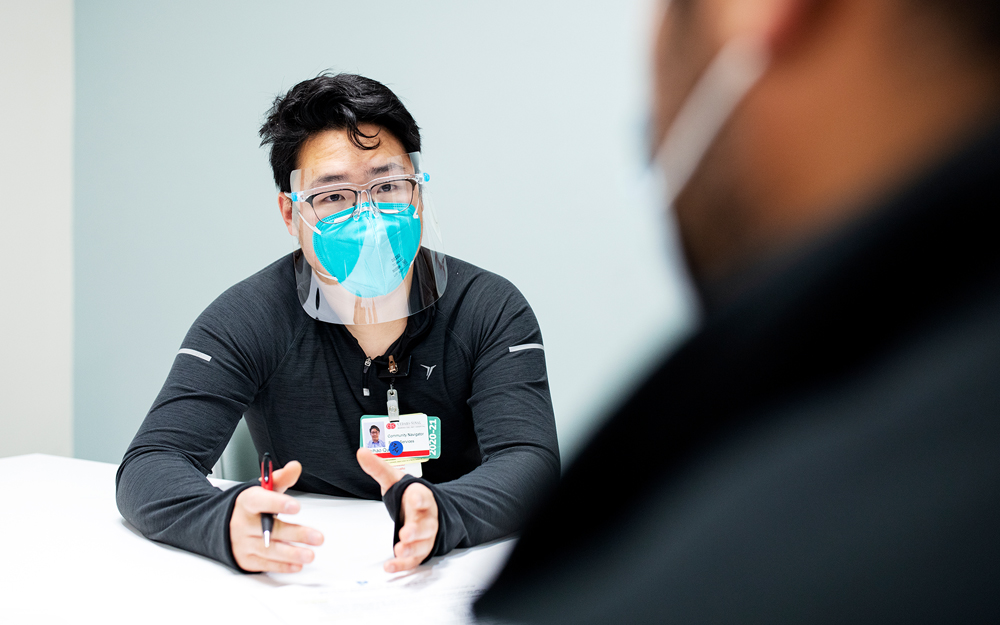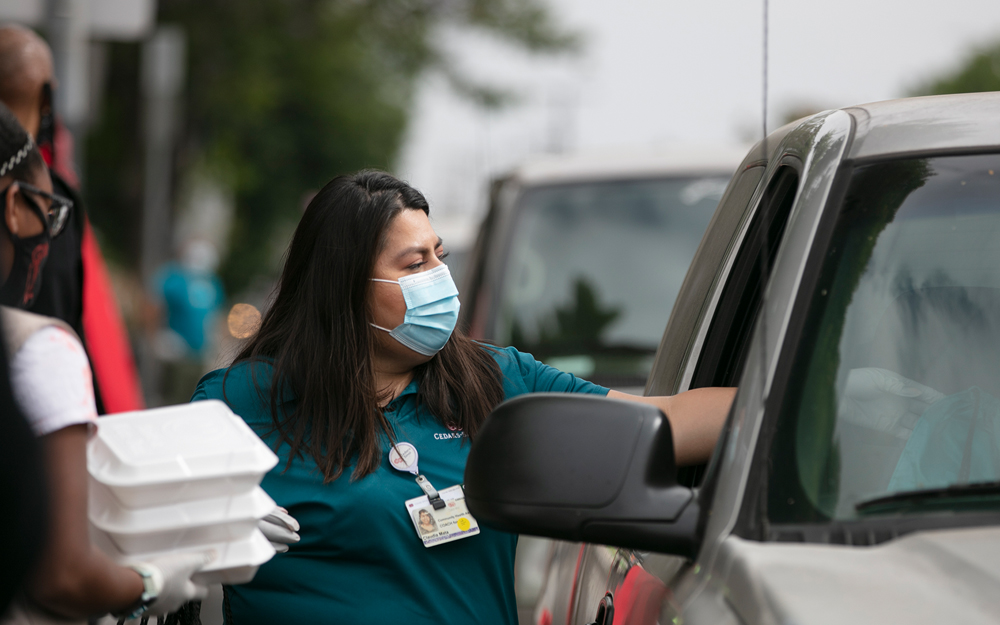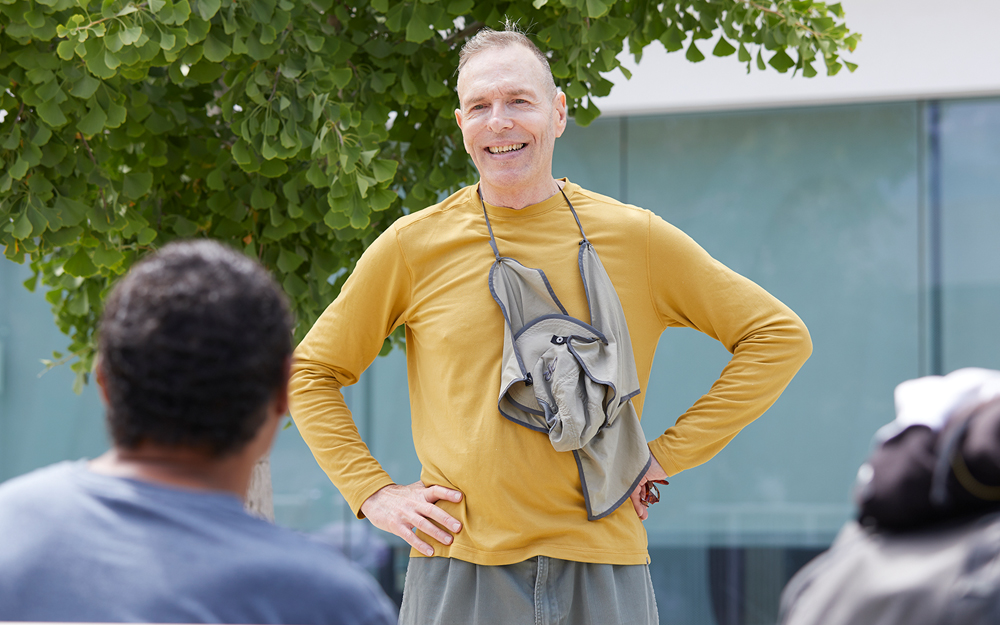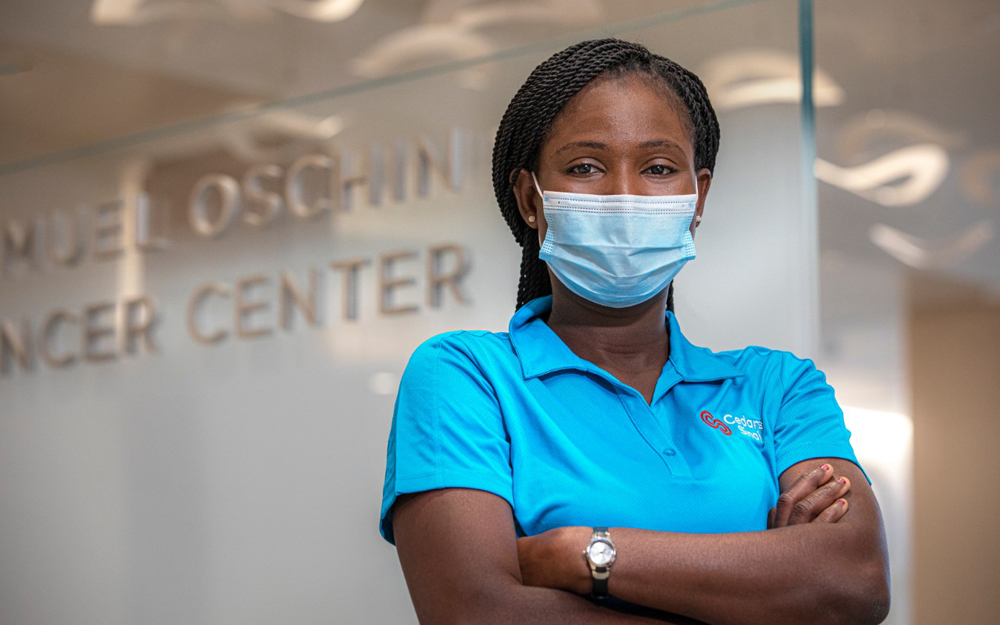Cedars-Sinai Connects Patients to Services for Homelessness
Date
December 7, 2020
Credits

Date
December 7, 2020
Credits
Medical providers featured in this article
In Brief
{{cta-block}}
On a morning this July, Weihao Qu sat at his desk hunched over a street-view photo from Google Maps. Black Sharpie in hand, he carefully drew step-by-step walking directions to The People Concern's Annenberg Access Center—a facility about three miles away. There, a young man experiencing homelessness, with whom Qu had spent the morning, could get a free breakfast, take a shower and decide if he was willing to enter an alcohol detox program.
Although Qu created several more maps during his shift, cartography is a small slice of his role as a community navigator in the Emergency Department (ED) at Cedars-Sinai Marina del Rey Hospital.
"People experiencing homelessness who come to the ED have a lot of needs that an ED can't fill, I see my job as trying to bridge that gap by building as much support around them as possible through referrals to the medical and social services in the community."
Los Angeles is contending with a homelessness crisis. The 2020 Greater Los Angeles Homeless Count found that nearly 66,500 Angelenos are currently experiencing homelessness.
A problem of this magnitude demands attention, which is why Cedars-Sinai invests in partnerships developing and deploying innovative interventions.
In 2018, Cedars-Sinai awarded The People Concern a $100,000 grant, a portion of which funds the community navigator position. A nonprofit with a history of outside-the-lines solutions for combating homelessness, The People Concern leverages the fact that those who are housing insecure are more likely than the general population to visit an ED. The reasons are many; individuals experiencing homelessness largely lack relationships with healthcare providers, and they often suffer from acute and chronic conditions, as well as injuries resulting from assaults and accidents.
Or, as Qu points out, basic human needs may be the catalyst. "Sometimes people experiencing homelessness come in because they're just tired or hungry," Qu says.
"By being embedded in an ED, community navigators can build relationships with individuals who are frequent ED users and find out why they frequently use emergency services," explains Marissa Axelrod, director of Community Nursing at The People Concern. "Once the navigator isolates the person's issues, referrals can be made to appropriate community services."
In 2019, Cedars-Sinai continued to fund the navigator program. At the same time, the Diane and Dorothy Brooks Foundation funded two community resource coordinator positions in the ED at Cedars-Sinai Medical Center. (Although the title differs, the job description mirrors that of a community navigator.)
"Many patients I work with aren't aware of the services that could benefit them," says Dani Joseph, a community resource coordinator. Over the past year, Joseph and her fellow coordinator have built partnerships with area agencies, enabling them to connect frequent ED users with primary care doctors, substance use programs and mental health services.
Joseph notes, "The greatest need is for housing, but I also wish I could wave a magic wand and create more behavioral health providers."
These community connectors are having an impact. At Cedars-Sinai Marina del Rey Hospital, a statistical analysis conducted earlier this year showed that over a six-month period, ED visits by individuals experiencing homelessness decreased by more than 55% when a community navigator was present. The analysis also found that after working with a community navigator, patients experiencing homelessness extended the number of days between ED visits by nearly 30%.
"Without Cedars-Sinai's financial support and belief in our work, the many successes we've achieved would not have been possible," notes Axelrod.
Defeating homelessness remains a daunting task, but as Qu points out, "There are wins, and you certainly hold onto those."
One such win had its start that summer morning when Qu was mapping out the walking directions for the young man who needed to decide if he was willing to enter an alcohol detox program.
As it turned out, he was.
After completing the program, the man received a bus ticket through The People Concern's Project Homecoming. The program funds travel for people to return to their community of origin, where friends or family have agreed to house them. This man headed back to his hometown in Pennsylvania, where he now lives with his mother.
A week after returning home, the young man left Qu a voicemail.
"I could hear in his voice that he was choking back tears. He said, 'Thank you for thinking I was someone worth helping.'"





